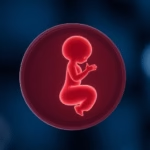Understanding CPD in Pregnancy
Today we will be talking about Cephalopelvic Disproportion (CPD) during pregnancy. CPD is a medical term used to indicate a situation where a baby’s head is too large to fit through the mother’s pelvis during delivery. This discrepancy in size can lead to complications during labor, making it a crucial consideration for healthcare providers when managing pregnancies. Understanding CPD is essential for expectant mothers as it can affect the birth plan, delivery method, and overall maternal and fetal health.
CPD can arise from a variety of factors, including the size and shape of the mother’s pelvis, the size of the baby, and the baby’s position in the womb. While some women may have a pelvis suitable for vaginal delivery, others may require a cesarean section due to the risk of obstructed labor. Knowledge about CPD is crucial for expectant mothers and healthcare providers to formulate a suitable delivery strategy, ensuring a safe birthing experience for both mother and baby.
1. Causes of Cephalopelvic Disproportion
The causes of CPD can be multifaceted, involving anatomical, health, and obstetric factors. Variations in pelvic structure can play a significant role. For instance, women who experience hormonal changes that lead to pelvic softening may also exhibit noticeable variation in the shape and size of pelvic openings. Furthermore, certain pre-existing health conditions, such as diabetes or obesity, can also contribute to larger-than-average fetal growth, known as macrosomia, increasing the likelihood of CPD. Additionally, the baby’s positioning can also affect delivery; if the baby is in a breech position or has a shoulder presented first, the risk for CPD increases. Understanding these causes allows healthcare providers to monitor pregnancies closely and make necessary preparations for delivery.
2. Symptoms Indicating Possible CPD
Identifying the symptoms of CPD can be challenging, as it often becomes a concern during labor rather than earlier in the pregnancy. Symptoms may include prolonged labor, inadequate cervical dilation, or failure of the descent of the baby during contractions. Women experiencing frequent contractions without significant progress may require evaluation for possible CPD. Monitoring the baby’s position through ultrasounds and vaginal examinations can assist in recognizing patterns that might suggest CPD. Comprehensive prenatal care is vital to address these early warning signs, allowing healthcare professionals to intervene appropriately, whether that means modifying the birth plan or proceeding with a cesarean section.
3. Diagnosing CPD
Diagnosing CPD typically involves several methods. Ultrasound imaging is pivotal in determining fetal size and wellbeing, while physical examinations assess the pelvis’s capacity and shape. During labor, healthcare professionals may also evaluate the labor’s progress and the baby’s presentation, which can indicate a need for intervention. Various assessments, such as examining pelvic inlet and outlet size or measuring fetal head circumference compared to pelvic dimensions, can contribute to a CPD diagnosis. Accurate diagnosis is essential to ensure the safety of both mother and child during the labor and delivery process.
4. Risks Associated with CPD
CPD presents several risks during labor, including prolonged labor, fetal distress from a lack of oxygen, and potential uterine rupture in severe cases. These factors underscore the necessity for close monitoring throughout labor for women diagnosed with CPD. There is also a risk for maternal complications, including postpartum hemorrhage or infection. Awareness and understanding of these risks allow healthcare providers to take proactive measures, ensuring that both the mother and baby receive the care they need and avoid dangerous scenarios. Sharing this information with expecting mothers fosters a better understanding of their options and aids in making informed decisions regarding their delivery plans.
5. Complications During Labor and Delivery
Labor can become complicated when CPD is present. As the baby’s head struggles to pass through the pelvis, labor can stall, leading to exhaustion for the mother and distress for the baby. Emergency interventions may become necessary, especially in cases that prolong labor and increase the risk of fetal hypoxia. Monitoring both maternal and fetal heart rates during labor is essential for identifying distress signals. In some instances, an emergency cesarean section may be required to ensure the safety of both mother and child. Understanding these potential complications is crucial for expectant mothers to be prepared for any situation that may arise during delivery.
6. Treatment Options for CPD
Treatment for CPD commonly depends on the severity and situation. Early prenatal care and assessment can help identify potential issues and determine appropriate interventions. Options may include adjusting the delivery plan to avoid vaginal birth when high risk is indicated. In some situations, labor may be induced to manage progress carefully. However, when complications arise or the risks outweigh benefits, a planned or emergency cesarean section may become the safest option for both mother and baby. Communicating these treatment options and establishing a collaborative approach between healthcare providers and expectant mothers is vital for successful delivery plans, ensuring informed and empowered birthing experiences.
7. Lifestyle Changes to Mitigate CPD Risks
While CPD cannot always be prevented, maintaining a healthy lifestyle during pregnancy can mitigate risks. Mothers should focus on balanced nutrition, regular exercise (as advised by a healthcare provider), and avoiding excessive weight gain. Additionally, staying hydrated and attending regular prenatal appointments is essential for monitoring both maternal and fetal health. Prenatal education, including understanding labor positions and pain management techniques, can also prepare mothers for delivery. Taking these proactive steps promotes overall well-being, empowering expectant mothers to visualized positive birth experiences while minimizing potential complications associated with CPD.
8. Support Systems for Women with CPD
Support systems are critical for expectant mothers facing CPD. Emotional support from family, partners, and friends during pregnancy and labor can ease stress and contribute positively to outcomes. Joining pregnancy support groups or pre-birth classes can provide education and foster community among those navigating similar experiences. Additionally, having a well-prepared birthing team, including a supportive obstetrician and potentially a doula, can ensure that mothers feel empowered and informed during labor. This supportive structure is crucial for addressing anxieties and ensuring a smooth delivery process.
9. Postpartum Considerations Following a CPD Delivery
The postpartum phase following a delivery complicated by CPD may require additional recovery consideration. Mothers who underwent a cesarean may face longer healing times and specific care routines, including wound care and pain management. Emotional responses can vary, and seeking help for postpartum anxiety or depression is essential. Continued support from healthcare providers, family, and friends fosters recovery and adjustment to motherhood. Understanding potential physical limitations and exercising caution during recovery supports overall health and well-being in those crucial postpartum months.
10. Future Pregnancies After CPD Experience
For women who have experienced CPD in a previous pregnancy, discussions about future pregnancies can evoke concerns and questions. Consulting with healthcare providers about individual risks associated with subsequent pregnancies is essential. Additionally, strategies to address any pitfalls encountered in the previous pregnancy delivery plan ensure informed decision-making for future births. Understanding past experiences can prepare mothers for new challenges while considering any necessary changes to promote positive outcomes for future pregnancies.
Conclusion
Cephalopelvic Disproportion is a significant factor in pregnancy and labor management. Understanding CPD empowers expectant mothers and healthcare providers to navigate potential risks and challenges effectively. Early diagnosis and continuous monitoring are key aspects to ensure both maternal and fetal safety during childbirth. Knowledge of the causes, symptoms, risks, and treatment options available enables expecting mothers to make informed decisions about their birth plans. Furthermore, embracing a healthy lifestyle, fostering strong support systems, and being prepared for postpartum recovery all contribute to a positive birthing experience.
The experience with CPD can range widely. Support, education, and adaptation are fundamental components that can help women navigate their pregnancies. As each pregnancy journey is unique, open communication with healthcare providers is essential for developing appropriate strategies that can lead to successful deliveries. While CPD may present risks during childbirth, advancements in medical care allow for safe management and intervention. Ultimately, the goal remains clear: ensuring a healthy mother and child at the end of the journey.
Frequently Asked Questions
- What is Cephalopelvic Disproportion?
It refers to a condition where the fetal head is too large to fit through the mother’s pelvis during delivery. - How is CPD diagnosed?
CPD is diagnosed through physical examinations, ultrasounds to assess fetal size and position, and monitoring labor progress. - What are the risks associated with CPD during labor?
Risks include prolonged labor, fetal distress, maternal complications, and the potential for a cesarean delivery. - Can lifestyle changes prevent CPD?
While CPD cannot always be prevented, maintaining a healthy lifestyle can mitigate some associated risks and complications. - What support options are available for mothers experiencing CPD?
Emotional support from family and friends, professional doula assistance, and joining prenatal classes can help mothers cope with challenges related to CPD.
Further Reading
3.5 tog sleeping bag temperature guide
What Type of Psychotherapy Is Best for Anxiety?







